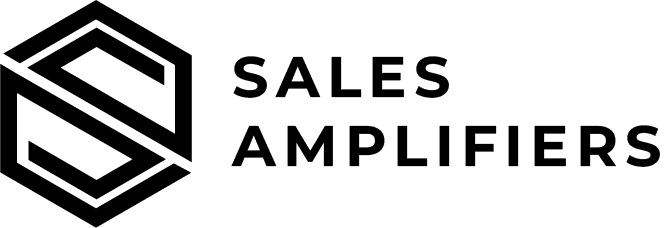- By Noor Ur Rehman
- February 7, 2025
- No Comments
The digital environment demands immediate page speed optimization because users have extremely high performance standards for websites. The combination of quick website loading speeds provides enhanced user experience that helps with search engine optimization while directly affecting how your site performs in search results along with conversion rates. The complete guide emphasizes the crucial role of page speed optimization through SEO methods that lead to better website performance in the upcoming year 2025.
Table of Contents
ToggleUnderstanding Page Speed Optimization
Page speed refers to the time it takes for a web page to load its content fully. It’s a crucial aspect of user experience, as faster pages lead to higher engagement, lower bounce rates, and improved retention. According to recent data, 53% of users abandon a website if it takes more than 3 seconds to load.
Several metrics are used to measure page speed:
Time to First Byte (TTFB): The time taken for the browser to receive the first byte of data from the server.
First Contentful Paint (FCP): The time when the first piece of content becomes visible to the user.
Largest Contentful Paint (LCP): The time it takes for the largest content element to become visible.
Cumulative Layout Shift (CLS): Measures the visual stability of the page during loading.
Interaction to Next Paint (INP): Assesses the responsiveness of the page to user interactions.
These metrics collectively form Google’s Core Web Vitals, which are essential indicators of a website’s performance and user experience.
The Impact of Page Speed Optimization on SEO
Page speed optimization is not just a user experience factor; it’s also a significant ranking signal for search engines like Google. In 2025, Google’s algorithm continues to prioritize websites that offer fast and seamless experiences. Studies have shown a clear correlation between page speed and search engine rankings. For instance, a study by Neil Patel analyzed 143,827 URLs and found that faster site speeds correlated with higher Google search rankings.
Moreover, a one-second delay in page load time can result in a 7% drop in conversions, underscoring the importance of speed in achieving business goals.
Key Strategies for Page Speed Optimization
Improving your website’s speed requires a multifaceted approach. Here are some effective strategies:
1. Optimize Images and Media Files
Large images and media files are common culprits for slow page loads. To optimize them:
Compression: Use tools like TinyPNG or ImageOptim to reduce file sizes without compromising quality.
Proper Formats: Choose appropriate formats such as WebP for images, which offer better compression rates.
Responsive Images: Implement responsive images to ensure appropriate sizes are loaded for different devices.
2. Leverage Browser Caching
Browser caching stores static files on a user’s device, reducing the need to reload them on subsequent visits. Implementing browser caching can significantly decrease load times for returning visitors.
3. Use a Content Delivery Network (CDN)
A CDN distributes your website’s content across multiple servers worldwide, ensuring users access data from the server closest to them. This reduces latency and speeds up content delivery.
4. Minify CSS, JavaScript, and HTML
Minification involves removing unnecessary characters and spaces from code files, reducing their size and improving load times. Tools like UglifyJS and CSSNano can automate this process.
5. Implement Lazy Loading
Lazy loading defers the loading of non-critical resources, such as images and videos, until they are needed. This approach reduces initial page load time and conserves bandwidth.
6. Optimize Server Response Time
A slow server response can bottleneck your page load speed. Ensure your hosting provider offers robust performance, and consider server-side optimizations like database indexing and efficient query handling.
7. Enable Compression
Gzip or Brotli compression can reduce the size of your HTML, CSS, and JavaScript files, leading to faster load times. Most modern browsers support these compression methods.
8. Reduce Redirects
Each redirect creates additional HTTP requests, increasing load times. Minimize the use of redirects to enhance performance.
9. Prioritize Above-the-Fold Content
Ensure that content visible above the fold loads quickly to engage users immediately. This can be achieved by prioritizing critical resources and deferring non-essential scripts.
10. Regularly Monitor Performance
Use tools like Google PageSpeed Insights, GTmetrix, or WebPageTest to regularly assess your website’s performance and identify areas for improvement.
The Role of Core Web Vitals in 2025
As the year 2025 approaches Google continues to base its page experience evaluation on Core Web Vitals rules. The three metrics referred to as LCP CLS and INP serve to measure how web pages perform regarding their load speed and user interface stability and interactivity. Websites that reach the Core Web Vitals benchmarks developed by Google enhance user engagement by 24%. PAGEOPTIMIZER.PRO To excel in these metrics: Your website should achieve a Largest Contentful Paint result that stays below 2.5 seconds. Enhancing server response times and adopting CDNs along with optimizing image sizes creates this required functionality. Cumulative Layout Shift (CLS): Maintain a CLS score of less than 0.1. Allocate empty areas before image and advertisement placement to stop page layout changes.
Conclusion
Page speed optimization serves fundamental roles in both SEO interventions and user experience optimization as well as website performance excellence. The year 2025 requires websites to operate at top speed because both search engines and users will expect it thus requiring organizations to optimize website performance for maximum velocity. The total benefit of website improvement stems from image compression and CDN use and server time optimization and web vital advancement which leads to superior search engine ranking and enhanced user activity and transaction volume. Google PageSpeed Insights and GTmetrix serve as tracking tools for performance optimization which keep your website competitive in the digital environment when used along with updated speed optimization trends and regular tracking. A website which loads quickly grants benefits for SEO but also serves as an essential business requirement.




